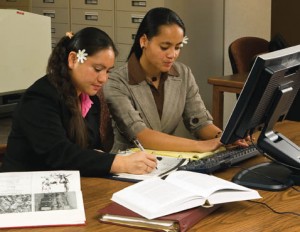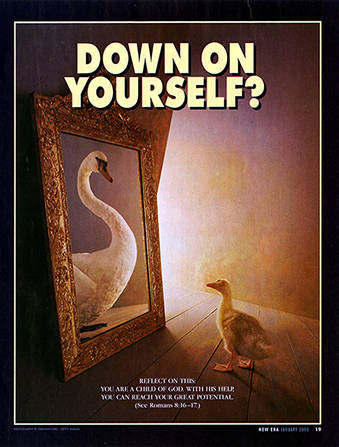 As a writer, I spent a great deal of time teaching my children to write and to do research. I taught them how to evaluate sources and to recognize bias. I wanted them to be intelligent readers. My parents were strict about this. When we watched commercials on television, they asked us what message the advertiser was trying to send us and what methods he was using to get us to see things his way. We learned to identify loaded words and arguments. When we researched a topic, they would show us how to evaluate the source to understand bias and the author’s qualifications to write on the subject. We learned how to find and use a wide range of resources. These skills are useful to me as a writer, as a life-long independent student, and as a human being.
As a writer, I spent a great deal of time teaching my children to write and to do research. I taught them how to evaluate sources and to recognize bias. I wanted them to be intelligent readers. My parents were strict about this. When we watched commercials on television, they asked us what message the advertiser was trying to send us and what methods he was using to get us to see things his way. We learned to identify loaded words and arguments. When we researched a topic, they would show us how to evaluate the source to understand bias and the author’s qualifications to write on the subject. We learned how to find and use a wide range of resources. These skills are useful to me as a writer, as a life-long independent student, and as a human being.
The first week I homeschooled my two youngest children, who were in second and third grade that year, we gathered up all their dinosaur picture books. We assigned each one a number and wrote the number across the top of the chalkboard. We then turned that into a chart, with the downward spaces as a place to write facts. The facts were written on the left hand side. Then lines created boxes under each source book. The children opened the first book and started to read out loud, taking turns. Each time we encountered a fact, we added it to our chart with a page number.
When we finished the book, we started the second book. If we encountered a new fact, we added it to the chart. If we found the same fact in that book we’d found in the first, we put a checkmark in the square that indicated the correct book and fact. However, if the book contradicted the first book, we’d put a question mark and note the page on which the contradiction occurred. We continued through all ten picture books. (We skipped the chapter books in the interest of time.)
Long before we finished the chart, we noticed one book had question marks in almost every space. After we were done, we went to more adult sources written by qualified experts, and began evaluating the question marked facts. Before long, the children decided, on their own, to throw away the questionable book. Too much of its information was inaccurate. They were on their way to learning to evaluate sources.
As they became older, we added more sophisticated methods of evaluating sources. Following are some of the ways we considered whether or not a source was valid:
-
What are the author’s qualifications?
 I am not a person who thinks you need a degree in order to be qualified, but I do at least notice whether or not the author has one. Having one doesn’t mean he is ethical in his writing on a subject, but not having one doesn’t mean he doesn’t know the subject well. It’s just a starting place.
I am not a person who thinks you need a degree in order to be qualified, but I do at least notice whether or not the author has one. Having one doesn’t mean he is ethical in his writing on a subject, but not having one doesn’t mean he doesn’t know the subject well. It’s just a starting place.
If there is no degree, though, I want to know what did qualify the author to write on the subject. Has he written other books or articles on this topic? How were those received by qualified reviewers? Does he have the respect of the community that specializes in his field? Does he use serious sources that show he has really read the right material? Does he have personal experience with the topic?
-
What are his biases?
This is a great project for your homeschoolers to tackle. To figure it out, they will need to do some serious research on the author. They need to find out something about his life and his other writings. For instance, if someone is writing about Mormonism, you want to know what his connection to Mormonism is. Is he a strong and loyal Mormon? Is he a former Mormon? Has he built a following by attacking the church? Is he a scholar whose writings contain a fair and balanced analysis?
Having a bias doesn’t necessarily mean you can’t use the person as a resource, but your student needs to know it exists. A person who is biased, whether for or against a subject, will naturally select among facts that support his view. This means that if you are looking to write a paper that presents the same view, you are fine. If you are trying to write a balanced article, you’ll also need to find people whose bias goes the other way, as well as people who try not to be biased.
-
Does the source contain loaded language?
 Compare the following three sentences:
Compare the following three sentences:
Joe Martin spent two hours manipulating his gullible audience into believing there was some sort of desperate need for a new museum on mashed potatoes.
And:
Joe Martin’s carefully thought out presentation on the new potato museum was an enlightening look at the history of potatoes and its critical role in our town’s history.
And finally:
Joe Martin gave a speech on the forthcoming potato museum last Tuesday.
Each of these sentences gives the same basic information, but in very different ways. We can see the first writer hated the museum (and its supporters) and wanted to influence his readers to do the same. The second supported the museum and wanted his readers to do the same. The third was a neutral statement of facts.
Give your children several articles on the same topic, written in different ways—for, against, and neutral. Ask them to go through each one and mark manipulative words and sentences. Then discuss how the author has used words and information choices to influence their thinking. After they do this enough times, they will find it impossible to read without noting loaded language. Again, whether or not the bias is good depends on your goal in teaching the topic—but you need to know loaded language exists and what impact it has on the reader.
-
Does the author source his information?
Many writers, particularly on the Internet, write articles, books, and entire websites without telling you where they got their information. “Sixty percent of all Martians live on peanut butter.” Anyone can make up a statistic or fact. Does your source tell you where he got that number? If not, be suspicious.
Be suspicious of anonymous sources, as well. There are rules responsible writers follow when using an anonymous source. This page by the Associated Press is enlightening in helping students learn what a responsible journalist should do. When quoting an anonymous source, there are still certain rules to be followed, in order to help the reader decide how valid the information might be:
The story also must provide attribution that establishes the source’s credibility; simply quoting “a source” is not allowed. We should be as descriptive as possible: “according to top White House aides” or “a senior official in the British Foreign Office.” The description of a source must never be altered without consulting the reporter.
When a source is given, always follow it up. Go to the source and read it. Seeing the quote in context can impact how you feel about it. As often as possible, get your information from the original source, not from someone who is quoting it.
-
Checking the Context of Information
 Above, I mentioned seeing the quote or information in context. This is critical, because irresponsible writers often quote a small portion of a quote that means something entirely different from what the writer really said. For instance, one reporter might write:
Above, I mentioned seeing the quote or information in context. This is critical, because irresponsible writers often quote a small portion of a quote that means something entirely different from what the writer really said. For instance, one reporter might write:
Children’s author Bob Malarky recently shocked readers by saying, in his new book, “I hate children.”
However, a wise reader will go get the book from the library and look up that quote. They might find only a portion of the sentence was quoted: “I hate children who bully others. I wish we did a better job of teaching children to be kind.”
Another form of emotional manipulation is to leave out the context. One popular discussion that requires context is the Apostle Paul’s comments on marriage. Taken out of context, it seems like Paul is very opposed to marriage. However, this page has some discussion on the topic that, when placed in the context of the time and audience, makes his words seem very different. Scroll down to the second question on the page:
Teaching your children to do responsible and accurate research is a critical part of education. It will protect them all their lives, particularly as new technology makes it easier and easier for irresponsible people to put out false information. Knowing how to evaluate their sources will help them choose the best sources for the research they are doing. It’s hard work—but it can be a lot of fun. There is a certain amount of satisfaction in uncovering the fact that someone has been trying to trick you!
About Terrie Lynn Bittner
The late Terrie Lynn Bittner—beloved wife, mother, grandmother, and friend—was the author of two homeschooling books and numerous articles, including several that appeared in Latter-day Saint magazines. She became a member of the Church at the age of 17 and began sharing her faith online in 1992.






